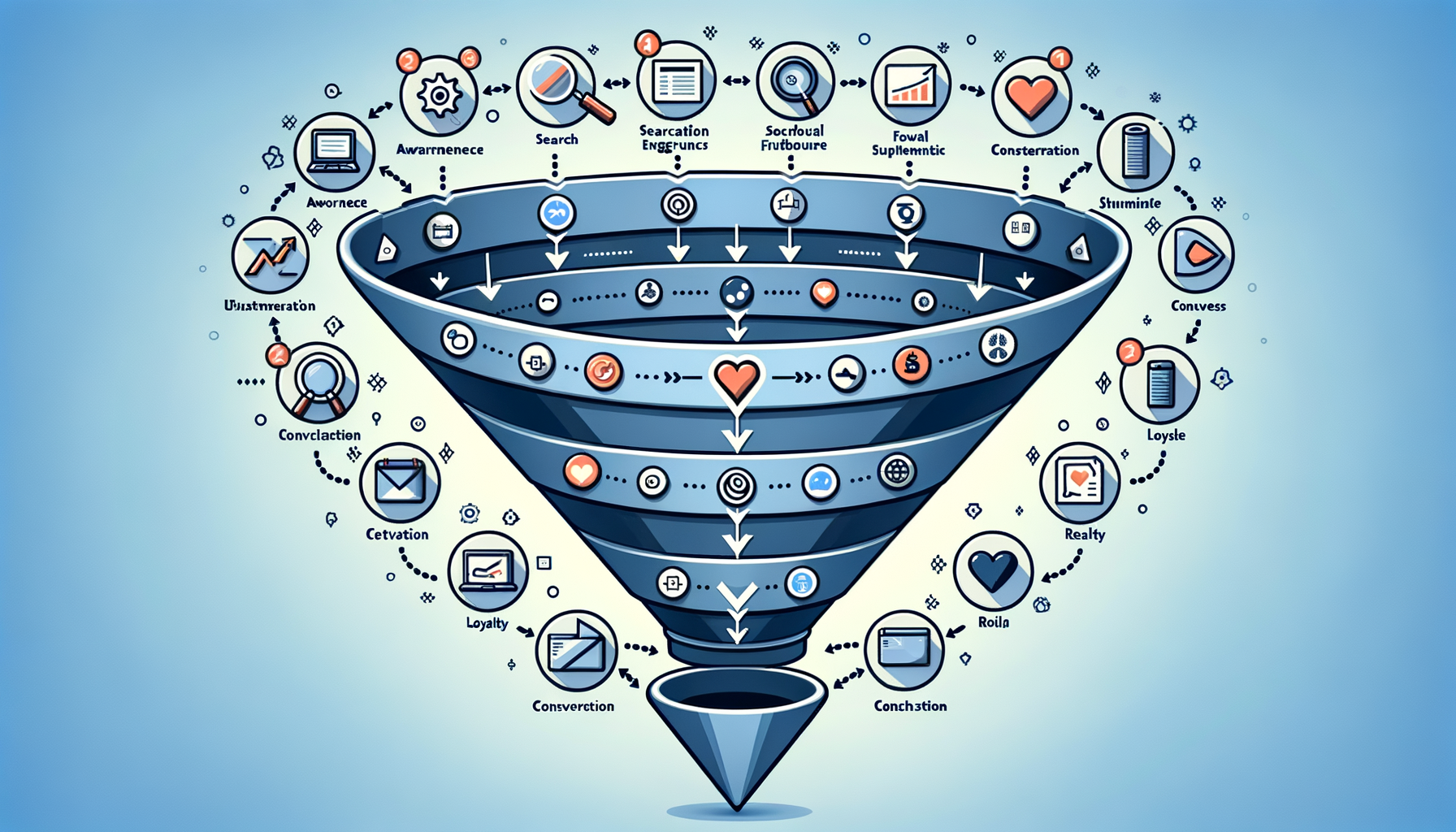“Mastering the Art of Conversion Funnel for Effective Marketing”

To utilize its potential, a business should cast its web wide enough to capture all the interested prospects out there. A well-constructed conversion funnel works like this extraordinary web, gradually guiding prospects from the very first interaction to the ultimate purchase. To really understand and optimize your marketing strategy, it’s paramount that you comprehend the transformative journey of a prospect- from a mere visitor to a valued customer.
**Understanding the Conversion Funnel**
The conversion funnel or sales funnel is a visual representation of the customer journey. It schematizes the process through which your prospects move from the first stage of awareness towards additional interaction with your business and finally conversion into customers. This funnel metaphor translates a broad market base that narrows down to a selected audience who eventually make a purchase.
The diversification of modern marketing allows customers to engage with businesses at multiple points along the journey. Irrespective of these varied points of contact, the fundamental stages of the funnel remain constant: Awareness, Consideration, Conversion, and Loyalty.
**Stage 1: Awareness**
Creating awareness is the initial phase of the marketing funnel. Here it’s your responsibility to make potential customers aware of your product or service. This stage marks the first interaction, where a potential customer educates themselves about your business and the solutions you offer.
In today’s digital world, awareness primarily accumulates across search engines, social media platforms, and blogs. Hence, your focus should be on creating impactful content in the form of blog posts, social media updates, podcasts, videos, webinars, infographics, and SEO strategies to lure the attention of prospective customers.
While creating content, remember that it should offer value to the prospective customer. Value-added content not only captivates attention but also inspires trust and exudes the expertise of your business.
**Stage 2: Consideration**
Having struck a chord and garnered the attention of prospects, the next stage leads them into the consideration phase. This is the stage where prospects start evaluating the offerings by your business against that of your competitors.
For businesses, the consideration stage presents an opportunity to differentiate their product or service offering. During this stage, your content should not only inform but also persuade. To stand out from your competition, develop white papers, case studies, free samples, product demos, FAQs, customer testimonials, and independent articles to persuade prospects that your solution is superior.
Allowing customers to experience your product or service with a free trial or demo could provide them with the tangible confirmation needed to favor your offering. Simultaneously, cultivating impeccable customer service at this stage can majorly tilt the scales in your favor.
**Stage 3: Conversion**
The conversion phase is the critical stage where prospects make the buying decision. With your compelling selling proposition and excellent customer service, you have managed to convince prospects that your solution is the best that the market has to offer.
The conversion phase requires a delicate approach, avoiding any unnecessary complexity that could hinder the buying process. To keep this friction in check, ensure a smooth checkout process and flexible payment options as your prospect becomes a customer. You can use multiple methods such as email marketing, deals, special offers, and retargeting efforts to attract and retain your customer’s attention.
**Stage 4: Loyalty**
Post-purchase, the customer journey enters the loyalty phase. In an ideal world, the journey of customer acquisition would cease after conversion. However, businesses should aim to transform one-time customers into loyal customers.
Indeed, it’s more cost-effective to retain existing customers than to acquire new ones. By exceeding customer expectations and fostering a personal connection, you can transform a typical customer into a brand advocate.
Ideally, delight customers with a flawless experience using after-sales service, personalized emails, surveys, tutorials, and loyalty programs. You can also utilize customer feedback to enhance your product or service and meet the customers’ expectations better, thereby fostering long-term loyalty.
**Nurturing the Conversion Funnel**
Managing a conversion funnel is a proactive task that requires constant monitoring, analysis, and improvement. Regular tracking of key metrics like bounce rate, conversion rate, and customer lifetime value can provide valuable insights into customer behavioral patterns and your campaign performance.
Using these insights, you can optimize each stage of your conversion funnel, prioritizing prospects that are more likely to convert. Further, marketing automation tools can identify critical touchpoints in the funnel, enabling you to customize your approach, enhance experiences, and maximize your conversion rates.
**Taking the Next Step**
The dynamic nature of modern marketing holds enough space to accommodate occasional missteps. Despite this, it’s vital not to underestimate the power of a streamlined conversion funnel: it’s a key element in structifying successful marketing strategies.
Remember, each stage in the funnel requires a focused approach. Tailor your content to meet the specific needs of each phase and engage customers with precise timing. Strive to build trust among your prospects, and work hard to retain it once earned.
With the help of conversion funnel strategy, you can effectively guide your customer’s journey while better understanding their concerns and desires. Remember that your funnel isn’t just a tool; it’s your guide to continual optimization and growth.
In conclusion, a well-structured conversion funnel is a potent tool that positions your business for success. By understanding and optimizing each stage of the funnel, you can ensure a lucrative customer journey and thereby grow your business consistently. Remember, the ultimate goal isn’t merely to secure a sale; it’s conveying the right message, to the right people, at the right time—resulting in a long-term customer relationship, directly amplifying your bottom line. The journey might seem intricate, but the rewards are unequivocally substantial.

Recent Comments